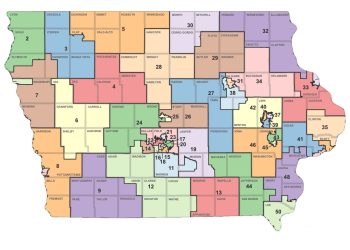(The Center Square) – Iowa received a “B” in “financial condition” on its report card from Truth in Accounting, a government watchdog, as it released its Financial State of the States 2021 report on Tuesday.
The state ranked 9th in the nation, with a $2 billion surplus or about $2,000 per taxpayer based on its unaudited preliminary financial report for fiscal year 2020 as it had $12.7 billion available to pay $10.6 billion in bills, according to the report. It is one of 11 states with enough money to pay its bills. The state’s overall financial condition improved nearly 25% “largely due to COVID-related grants” of $2 billion, the report said.
“[Federal support from COVID-19 related grants and the surplus] will help the state to weather any future public health or economic crises and downturns in the market, which can cause the value of a government’s assets to fluctuate,” the report said. “The uncertainty surrounding this current crisis makes it impossible to determine how much will be needed to maintain government services and benefits.”
States with a surplus exceeding $10,000 per taxpayer receive an “A.”
Thirty-nine states did not have enough funding to pay their bills. Fifteen of those had a taxpayer burden of $5,000 to $20,000. These states received a “D” on their report card. The 2020 fiscal year ended with $1.5 trillion in total debt among the 50 states.
While Iowa was a leader in fiscal health, it is the second least timely state to release its fiscal year 2020 financial report. As of Sept. 15, Iowa had not released an audited copy of its fiscal year 2020 report, according to a Truth in Accounting news release The Center Square received.
California has not released its fiscal year 2020 report, according to the report. Illinois, the third least timely state, released its report 408 days after the end of the fiscal year. North Dakota (163 days), Minnesota (168 days), Wisconsin (174 days), and Nebraska (170 days) were within The Government Finance Officers Association’s standard for states, which is 180 days after the end of a fiscal year. The national average for publishing fiscal year 2020 financial reports was about 211 days.
“This is the tardiest that state governments have been at releasing their annual reports in the 12 years that we have surveyed the states,” the report said. “The COVID-19 pandemic may have contributed to the delays given that most state government employees switched to work-from-home schedules.”
The top three indebted states were:
- Connecticut: per taxpayer burden of $62,500
- New Jersey: per taxpayer burden of $58,300
- Illinois: per taxpayer burden of $57,000
The average taxpayer burden across the 50 states was $9,300 for fiscal year 2020, $2,000 worse than the prior year.
The most fiscally healthy states were:
- Alaska: per taxpayer surplus of $55,100
- North Dakota: per taxpayer surplus of $39,200
- Wyoming: per taxpayer surplus of $19,500
Nationwide, most state debt stems from unfunded retirement benefit promises, such as pension and retiree health care liabilities. For 2020, pension debt totaled $926.3 billion, and other post-employment benefits (OPEB), mainly retiree health care, totaled $638.7 billion.















